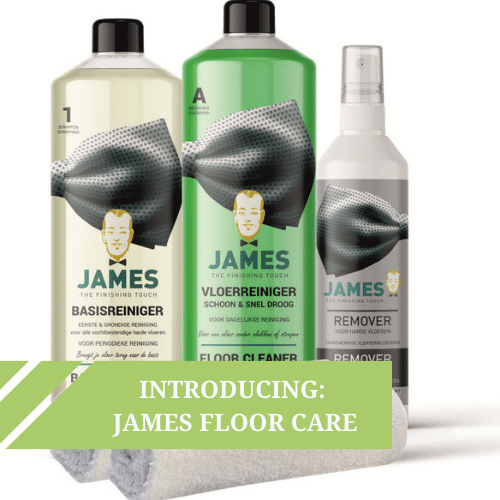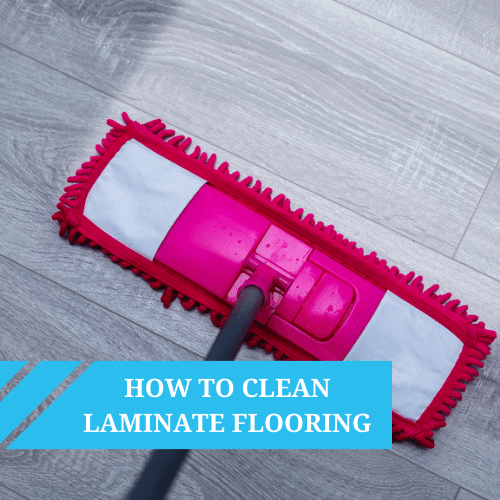We use cookies to make your experience better. To comply with the new e-Privacy directive, we need to ask for your consent to set the cookies. Learn more.
Why Does My Laminate Flooring Feel Bouncy? And Other FAQs
In this comprehensive FAQ blog post, we're opening the floor to your burning questions on all things laminate.
Is your laminate flooring throwing a bounce in your step? If it sometimes feels like you're walking on a trampoline rather than solid ground, you're not alone.
Laminate flooring, though celebrated for its durability, low cost, and wide range of designs, can also present homeowners with a unique set of challenges, including that somewhat disconcerting 'bounce'.
In this comprehensive FAQ blog post, we're opening the floor to your burning questions on all things laminate.


Laminate Flooring FAQs:
Why is my laminate flooring bouncy?
When your laminate floor feels bouncy, it could be down to an inadequate or uneven subfloor. Just like a canvas needs to be smooth for a painting, laminate flooring requires a flat and sturdy subfloor. If it is uneven or structurally deficient, the floor can reflect these imperfections, leading to the unsettling sensation of a bouncy floor.
Another potential issue could be insufficient or low-quality underlay. An underlay acts as a cushion for your laminate floor, absorbing some of the impact from foot traffic. It also helps to smooth out minor subfloor imperfections. If it's not up to par, you may start to feel those squeaks and creaks under your feet. Read our underlays for beginners guide to learn more about underlays and why they are needed.
Lastly, improper installation techniques can cause a laminate floor to become unstable or uneven. For example, if an adequate expansion gap was not left around the edges of the room during installation, the laminate planks might start lifting at the edges due to wear and tear, contributing to the bounciness you're experiencing.
How to fix a bouncy laminate floor?
The method to fix a bouncy laminate floor will depend on the issue at hand. Here are three ways to do it:
Evaluate and Fix the Subfloor:
Fixing a bouncy laminate floor often begins with a thorough check of the subfloor. Look for unevenness, rot, or structural damage. You may even need to sand the floor down to ensure it's perfectly flat before any further steps are taken.
If structural issues are found, you might need to Reinforce the Subfloor. This could involve adding bridging or sister joists, to provide additional support and stability to the subfloor structure.
Use Proper Underlay: Investing in the right underlay can also make a world of difference. A high-quality underlay provides a sturdy base for your laminate floor, offering an additional layer of cushioning. This can help reduce the chances of bounciness and those disconcerting creaks and squeaks.
Reinstall or Repair: Finally, in cases where the bounciness can be traced back to improper installation, a reinstallation or repair might be the best course of action. This could involve re-installing the floor with an appropriate expansion gap or repairing the affected areas.
Remember, your laminate floor is designed to last for years. Don't let a bouncy floor stand in your way of enjoying it. With the right approach and possibly some professional guidance, you can restore your laminate floor's stability and keep the bounce where it belongs - in your step, not under it.


Why is my laminate floor lifting?
No one wants to see their beautiful laminate flooring warping or lifting. However, it can happen, and one common culprit is moisture damage. Most laminate floors aren’t waterproof, and when exposed to excess moisture, they can swell and start lifting at the edges.
Inadequate expansion gaps can also lead to the floor lifting. As temperature and humidity levels change, laminate floors can expand or contract. Without sufficient expansion gaps left around the room's perimeter during installation, the floor has nowhere to go and may start lifting.
Faulty installation is another common reason behind laminate floor lifting. If the boards aren't clicked together properly, or if the subfloor was not adequately prepared, it can lead to lifting over time. To avoid these issues, always ensure your flooring is installed correctly, follow all manufacturer instructions, and take steps to manage the moisture in your home.
You can also invest in a waterproof laminate like the Berry Alloc Ocean collection, for high-moisture areas to prevent the issue.
Why does my laminate floor creak?
A creaky floor might be ideal for a haunted house, but in your home, not so much. Laminate floor creaking usually boils down to issues with the subfloor, underlay, or lack of expansion space.
Loose or uneven subfloors can lead to creaking sounds as the laminate floor moves with foot traffic. An inadequate underlayment also might not provide enough cushioning and sound absorption, resulting in a noisy floor.
If the creaking persists despite a sound subfloor and correct underlay, you may need to check your expansion gaps. Like all flooring materials, laminate needs room to breathe. Insufficient expansion space around the room's perimeter can lead to buckling, and yes, creaking.
How long does laminate flooring last?
With its durability and aesthetic appeal, laminate flooring is perfect for high-traffic areas. On average, a well-maintained laminate floor can last anywhere from 15 to 25 years, depending on factors such as product quality, care, and foot traffic.
High-quality laminate flooring, kept clean and free from moisture, can even exceed this lifespan. Regular maintenance, such as cleaning with appropriate products and promptly attending to spills, can go a long way in extending the life of your laminate floor.
Be sure to check out our upcoming blog on Laminate Floor Cleaning and Maintenance Tips for a deep dive into preserving your flooring's longevity.


Can you burn laminate flooring?
While it's true that laminate flooring is partially made from wood, it's important to remember that it's not suitable for burning. Laminate is a composite material made from a mixture of wood fibres and resin. When burned, it can release harmful toxins into the air, posing a risk to health and the environment.
So, while your laminate floor can withstand wear and tear, hold up against high traffic areas, and offer an impressive lifespan, it's not designed for the fireplace!
Can you use carpet underlay for laminate flooring?
While carpet underlay provides a plush feel underfoot, it isn’t designed for laminate floors. The squishy, flexible nature of carpet can compromise stability, leading to issues like a bouncy laminate floor or lifting at the edges.
Laminate flooring requires a firm, stable underlay that absorbs sound, provides a bit of cushioning, and helps with moisture control. Always opt for an underlay specifically made for laminate floors to ensure optimal performance.
Can you sand laminate flooring?
Unlike real wood, laminate flooring doesn't take too kindly to being sanded. The top layer of laminate is a photographic print, which means sanding it could remove the image and ruin the look of your floor.
If your laminate floor has scratches or damage, using a filler designed for laminate, or replacing the individual planks is often a more effective solution. Remember, laminate is a durable, easy-to-maintain flooring option, but it requires the right care to keep it looking its best.
What can you put on laminate floors to protect them?
Maintaining the beauty of your laminate floors is simple with a few protective measures. Furniture pads can prevent scratches and dents from heavy furniture. Area rugs or protective mats can also be strategically placed in high traffic areas to minimise wear and tear.
Regular cleaning with suitable cleaning products can keep your floors looking new and prevent dirt buildup. And remember, water is not your laminate’s friend, so always wipe up spills quickly to avoid damage.
Key Takeaways
Laminate flooring is an excellent option for many homeowners thanks to its attractive appearance, durability, and easy maintenance. By understanding and addressing common concerns such as bouncy or creaky floors, lifting edges, and how to care for and protect your laminate, you can boost its longevity while retaining its looks.
Remember, your laminate floor doesn't just need to look good—it should perform well, too. Still unsure whether to opt for laminate or engineered wood flooring? Explore our engineered wood flooring vs. laminate guide.









